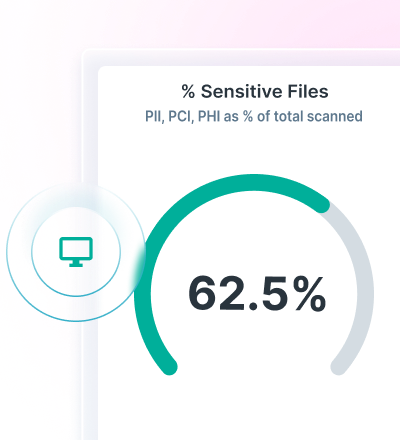The New Standard For Data Integrity In A Zero Trust World
0 minutos de leitura
Zero-trust has become the prevailing security mindset. In a nutshell, it’s the principle that no user, system or connection is inherently trusted. Every request must be verified, every action checked. This shift has elevated data integrity from a back-office database issue to a board-level priority.
In Hong Kong, this mindset has become especially critical as financial institutions, logistics providers and public agencies accelerate digital transformation under tightening regulatory oversight. With the government advancing new cybersecurity legislation and cross-border data exchange increasing, maintaining uncompromised data integrity is now essential to protect trust and economic competitiveness.
Data integrity definition — and why it is now the decisive metric
Access control alone does not guarantee that the information being accessed is trustworthy. If the data has been altered, corrupted or poisoned, then every verified connection, every authorised user and every protected system still makes decisions on false ground. In other words, if the zero-trust model asks “who and what can I trust to access my systems?”, data integrity further probes “can I trust the information driving my decisions, transactions and obligations?”
This is a critical discussion because the stakes are high. Without reliable data, analytics mislead, compliance collapses and decisions drift off course. For adversaries, tampering with data is often more damaging than stealing it; a poisoned transaction file or manipulated dataset undermines business operations at their core.
So what does data integrity mean in practical terms? Put simply, it is the accuracy, completeness and consistency of data across its entire lifecycle, protected from unauthorised change or corruption. Beyond defining data integrity, this guide aims to help leaders commit to storing data correctly and defending it as it moves through the entire digital ecosystem.
What breaks integrity today
Data integrity is fragile because it can fail in so many ways, and traditional concerns like human error or inconsistent formats are only the beginning. In a digital-first enterprise, the bigger risks come from attackers who deliberately manipulate data to cause disruption or gain advantage.
- Financial tampering — Altering payment instructions or account data creates immediate monetary loss.
- Healthcare risks — Modifying patient records or clinical trial results compromises safety and compliance.
- AI poisoning — Training or inference data can be corrupted, leading models to deliver biased, faulty or even dangerous outputs.
These are not abstract scenarios, but modern examples of integrity failures that directly affect business performance and trust. They highlight why integrity must be engineered into systems from the start, not bolted on later.
The zero trust lens: data integrity by design, not by audit
Historically, when organisations tried to enforce data integrity, it meant periodic audits or after-the-fact reconciliation. In a zero-trust world, that model is obsolete. Integrity must be verified continuously, just like identity or access.
The principle is straightforward: never assume the data is valid, and always prove it. That means tracking data lineage, checking for unauthorised changes in real time and binding protective policies to the data itself rather than to the system it happens to sit in.
Zero-trust makes integrity everyone’s problem — not just the database administrator’s. Executives, architects and compliance leaders all have a stake in whether the data they rely on can be trusted.
The new standard: four pillars that raise the bar
To build this continuous trust model, enterprises need a standard beyond definitions. Four pillars form the new benchmark for how to ensure data integrity:
- Provenance — Establish end-to-end lineage for critical datasets. Every record should carry its own proof of origin, version history and custody trail. Cryptographic signing and hashing provide immutability, while chain-of-custody logging prevents tampering from being hidden.
- Policy — Apply classification and obligations that stay with the data wherever it travels. Labels should reflect business risk and regulatory requirements, not just file type or format. This enables enforcement aligned with strategic intent rather than arbitrary technical rules.
- Protection — Deploy controls that prevent unauthorised alteration in real time. This includes least-privilege access, encryption and behaviour-aware enforcement that can detect suspicious modifications. Protection must also be adaptive: tight where risk is high, light-touch where data is less critical.
- Proof — Integrity claims must be verifiable. Routine checks, monitoring and audit trails provide the evidence that regulators and boards now demand. Automated testing and reporting turn integrity from an assumption into a measurable outcome.
Together, these pillars move data integrity from a static attribute to a living standard, one that travels with the information and withstands modern threats.
Operating model shifts that make integrity measurable
Advancing data integrity demands treating it as an operational discipline. This can be built on four critical shifts:
Ownership and accountability
Assigning accountability for data integrity is not a clerical task, but a governance imperative. Owners must carry measurable objectives, from error rates to validation coverage, and be held responsible for keeping those standards high. Moreover, a lapse in integrity should be treated with the same urgency as downtime in a critical application.
Workflow integration
Integrity checks locked in isolated dashboards are almost as dangerous as having no checks at all. To become operationally effective, validation results must be pushed directly into the systems that teams already use to act: vulnerability management pipelines, compliance reporting tools, etc. This integration ensures that remediation is documented, tracked and auditable.
Threat-led prioritisation
Not all integrity issues are created equal. Some are minor inconsistencies, others are active avenues of attack. Embedding external threat intelligence into monitoring allows organisations to distinguish between the two. By linking exposures to known attacker campaigns or exploit kits, teams can prioritise the vulnerabilities most likely to be targeted. This prevents resources from being wasted on noise.
AI-era hygiene
With AI now embedded in core business processes, the data feeding those models must be treated with uncompromising rigour. Training sets require provenance and version control to prevent silent poisoning, and access must be tightly governed to stop unauthorised manipulation. Validation gates and routine integrity checks at ingestion catch anomalies before they reach production models. On the inference side, monitoring for manipulation or drift protects outputs from being skewed. In the AI era, how to ensure data integrity means defending both the data and the models that depend on it.
Concrete examples of integrity leadership will recognise
To make this real, consider three scenarios that illustrate what data integrity means in practice:
- Financial transactions — A Hong Kong-based bank processes cross-border payments tied to its global trade desk. A payment file is intercepted and subtly altered. With data provenance validated at origin and integrity checks enforced downstream, the manipulation is detected before settlement, preventing silent fraud and protecting trust in Hong Kong’s position as a payments hub.
- Healthcare records — In Hong Kong’s push for cross-border electronic health records, suppose clinical-trial data is inadvertently changed during ETL in an AI-driven health-tech platform. With full chain-of-custody, version control and hashing applied, the inconsistency is flagged prior to regulatory submission, safeguarding patient safety and compliance.
- AI training sets — A Hong Kong fintech firm uses regional transaction data to train a machine-learning fraud-detection model. Suppose an insider injects false entries to bias outcomes. Integrity controls, such as immutability, lineage tracking and anomaly detection, identify the corrupted dataset at ingestion, preventing the model from learning incorrect patterns and protecting regulatory obligations.
Conclusive thoughts on data integrity as the cornerstone of zero-trust
Data integrity is the defining standard of resilience. Provenance, policy, protection and proof establish the foundation, but only when paired with intelligent classification and adaptive enforcement does it become a living discipline.
With Forcepoint Data Classification, organisations across industries in Hong Kong can automatically label, tag and protect sensitive information across endpoints, cloud and hybrid environments. It provides the context that zero-trust strategies demand and the confidence leaders need to make decisions on trusted data.
To see how your organisation can build data integrity into every interaction, explore Forcepoint Data Classification today.
No Artigo
X-Labs
Receba insights, análises e notícias em sua caixa de entrada

Ao Ponto
Cibersegurança
Um podcast que cobre as últimas tendências e tópicos no mundo da cibersegurança
Ouça Agora








